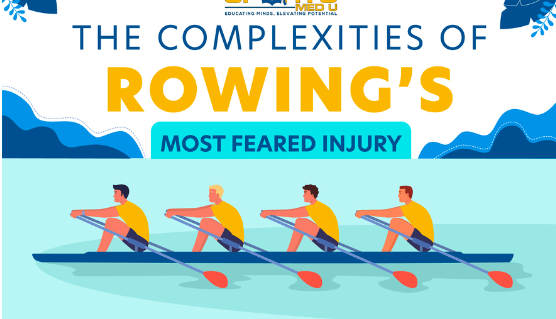
Rib Stress Fractures in Rowers: An overview
In the dynamic realm of rowing, the intricate interplay between biomechanics, training intensity, and physiological factors exposes athletes to unique challenges. One such challenge is the prevalence of rib stress fractures, which has an average incidence rate of 9.2% in rowers.
This article aims to delve into the risk factors associated with rib stress fractures and how to treat them.
Let’s jump in!
What is a Rib Stress Fractures in rowers?
Rib stress fractures, a common concern among rowers, arise from an interplay between bone resorption and formation during the bone remodeling process. This incomplete fracture occurs due to the strain induced by repetitive mechanical loading, this aligns with Wolff’s law, which states that bones adapt their structure in response to mechanical stress.
The manifestation of the condition is marked by general rib pain, predominantly felt in the lateral chest region and exacerbated during physical activity. As the condition progresses, the pain may follow the path of the intercostal nerve. Timely diagnosis, typically within 2 to 6 weeks from the onset of pain, is crucial for effective treatment and a swifter return to rowing.
Utilising bone scans, healthcare professionals can identify rib stress fractures as “hot spots,” indicating the uptake of a radioactive isotope at the fracture site. While radiography takes 2 to 12 weeks to reveal stress fractures, it should not be solely relied upon during the early stages, emphasising the importance of early recognition for optimal management and recovery.
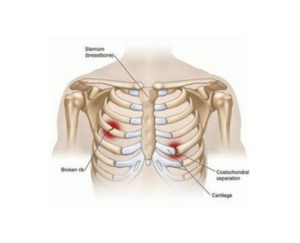
Diagnosing rib stress fractures
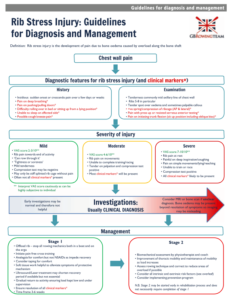
Full article – HERE
The Incidence rate of rib stress fractures
In the realm of rowing, the location and occurrence of rib stress fractures differ significantly between sweep rowing and sculling techniques. In sweep rowing, a substantial 81% of rib stress fractures are concentrated in the anterolateral/lateral aspects of the rib cage.
Conversely, sculling presents a more evenly distributed pattern, with 54% occurring in the anterolateral/lateral and 46% in the posterolateral/posterior regions. The unique movement patterns associated with shoulder, scapular, and thoracic actions in each rowing style likely contribute to these variations in rib fracture locations.
Examining the incidence, a study following 165 high-level rowers over three years suggests an overall calculated incidence of rib stress fractures as low as 2%. However, it’s crucial to consider potential underestimation due to variations in training exposure, especially within younger teams where recruitment and dropout rates can impact the true prevalence.
Notably, ribs five to seven were the most frequently affected, followed by ribs four and eight.
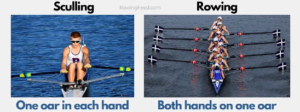
Mechanisms of Rib Stress Fractures in Rowing
Unlike weight-bearing bones, ribs typically don’t endure direct impact forces during rowing.
Instead, the likely culprit behind these fractures stems from a muscular perspective. Two prevailing theories aim to explain the mechanism of injury.
- The first theory suggests that rib stress fractures arise from exercise-induced muscle fatigue, leading to altered movement patterns and stress distribution. This, in turn, concentrates excessive force at specific points along the rib.
- The second theory proposes that robust muscle forces themselves impact the bone, generating compression within the rib cage and accumulating damage over time.
Check out our sports medicine newsletter

Risk Factors that increase the likelihood
Rib stress fractures, often stemming from a combination of mechanical strain, intrinsic factors & extrinsic factors, bring forth an array of points to consider.
Let’s have a look
Intrinsic Risk factors
Gender and Age
Despite previous assumptions about higher vulnerability in female rowers, recent literature shows no significant gender-based differences in reported rib stress fracture frequencies. However, there’s a notable age correlation, with higher incidences reported in the 22-27 age range, coinciding with the peak years of elite rowers.
Training Intensity and Performance Level
While age is a factor, the occurrence of rib stress fractures is more significantly influenced by the rower’s performance level and the intensity of their training regimen. Higher levels of performance are associated with an elevated risk of rib stress fractures due to the higher demands, training frequency and intensity.
Gender-Hormone Factors
Women using depot medroxyprogesterone (birth control) are associated with higher stress fracture incidence due to the affect it has on bone mineral density.
Joint Mobility
The rib cage, entwined with joints like costochondral, costo-vertebral, and costotransverse, plays a pivotal role in rowing biomechanics. Prolonged rowing sessions may induce increased thoracic spine flexion, heightening tension. This heightened tension, coupled with reduced joint mobility, compromises their ability to absorb forces effectively, potentially elevating the risk of rib stress fractures.
Beyond the site of injury, attention to the kinetic chain is crucial. A lack of flexibility in the lumbar spine and hips can disrupt the rowing stroke, leading to compensatory movements like heightened scapular protraction. Such compensations impact the delicate balance between retractors, such as the rhomboid muscle group, and the water.
Chest Wall and Abdominal Muscles
We turn our attention to the of anatomy, specifically the chest wall and abdominal muscles. A proposed theory for development of rib stress fractures is the simultaneous contractions of the serratus anterior and external obliques.
The rectus abdominis runs vertically, flexing the vertebral column and aiding in rib cage compression and forced expiration during rowing’s finish position. The oblique muscles, interwoven with the serratus anterior, contribute to trunk movements and forced expiration.
Notably, Warden et al.’s research found that a significant number of rib stress fractures occurred in ribs five to seven, where the rectus abdominis attaches, and ribs five to eight, involving both the rectus abdominis and external obliques. This underscores the theory that these abdominal muscles play a crucial role in rib cage compression during rowing
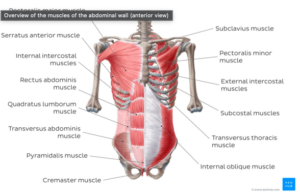
Extrinsic risk factors
Training
The combination of strain rate, force magnitude, and loading cycles significantly influences the risk of rib stress fractures. Elite rowers, with their intensified training routines featuring a higher number of strokes per session, may find themselves more susceptible to stress fractures.
Incorporating bench pull and bench press exercises into training regimes, mirroring scapular retraction and protraction movements in rowing, adds a layer of complexity. Notably, these exercises place notable stress on the postero-lateral rib cage, particularly impacting scullers. Many rowing injuries, including rib stress fractures, often occur during resistance training and land-based rowing ergometer sessions. While acute injuries are prevalent in these scenarios, rib stress fractures stand out as overuse injuries, urging a nuanced approach to training that balances intensity with injury prevention strategies.
Optimising Rowing Technique
Rowing technique plays a big role, with two primary styles—sequential and simultaneous—taking center stage.
The sequential style prioritises a sequential movement pattern, starting with leg drive, followed by trunk and arm motions. In contrast, the simultaneous style involves a nearly simultaneous engagement of legs and trunk.
International elite rowers have excelled with both styles. The sequential approach, characterised by higher peak handle force, greater relative handle force concerning body weight, increased absolute and relative handle power, and slightly longer stroke lengths, has been associated with elite performance.
Intriguingly, elite rowers with a history of rib stress fractures displayed disparities in seat and handle velocity during the initial drive, raising questions about varying motor strategies or execution issues with the sequential approach among those who sustained injuries.
The Crucial Role of Nutrition in Stress Fracture Prevention
Nutrition emerges as a key player in mitigating stress fracture risks, with a focus on calcium and vitamin D intake. Inadequate levels of these nutrients, often coupled with eating disorders, contribute to heightened stress fracture occurrence. Vitamin D plays a crucial role by facilitating calcium absorption in the gut and inhibiting parathyroid hormone, which is responsible for bone resorption.
Calcium, on the other hand, is indispensable for preserving bone mineral density, allowing bones to withstand applied stresses. A notable study involving female US naval recruits showcased a 20% reduction in stress fracture incidence with calcium and vitamin D supplementation compared to a placebo group.
Equipment Influence
Rib loading, a key factor in micro-damage and rib stress fracture development, directly correlates with the force exerted on the rib cage through the rower’s interaction with the oar.
The shift from ‘Macon’ to ‘Big Blade’ oars since the early 1990s has been linked to an increase in rib stress fractures. Macon oars, longer and symmetrical, differ from the shorter, broader, and asymmetrical Big Blade oars designed for enhanced rowing efficiency.
Prolonged rowing sessions, leading to increased lumbar spine flexion due to fatigue, place additional stress on the posterior structures of the spine.
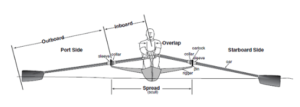
Strategies to Prevent Rib Stress Fractures in Rowing
Preventing rib stress fractures demands a holistic approach, starting with optimising rowers’ strength and coordination. Ensuring robust leg extension strength and lumbo-pelvic coordination is crucial, reducing upper body stress and fatigue while enhancing power transmission to the oar handle.
Paying attention to the often-neglected serratus anterior muscle is pivotal, preventing muscular weakness and maintaining protraction for optimal muscle memory and force production in the kinetic chain, ultimately boosting performance. Incorporating comprehensive warm-up, cool-down, and stretching routines maintains mobility in costo-vertebral and costo-transverse joints, aiding in rib stress absorption.
Regular screening for malalignment or hypomobility in thoracic vertebrae, ribs, and surrounding areas during intense training allows for timely interventions. While sports massage lacks robust evidence, it may offer pain relief, improve joint mobility, and reduce injury risk. Additionally, incorporating post-training stretching, especially for junior elite rowers, is associated with lower injury rates.
Careful consideration in strength and conditioning programs is essential, given the adaptability of bones to mechanical demands. Exercises like bench press and bench pull exert compressive forces on the ribs, thus being mindful of in their inclusion. Notably, case studies suggest that prioritising serratus anterior strengthening contributes positively to recovery, indicating its potential role in preventing rib stress fractures.
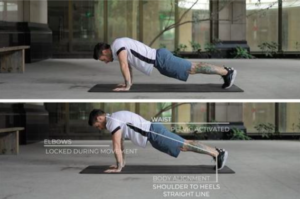
Guidelines to Mitigate Rib Stress Fracture Risks
Effective management of rib stress fractures involves prudent measures to minimise injury risks and support recovery. Sudden spikes in training volume, especially in land-based weight training and ergometer sessions, should be approached cautiously due to the significant stress they impose on the body. In case of suspected rib stress fractures, steering clear of excessive abdominal exercises is advisable, with these exercises reintegrated cautiously after recovery.
Responding to rib stress fractures typically involves a rest period of 2 to 8 weeks, coupled with adjusted training. It’s crucial to avoid using ibuprofen or other NSAIDs for pain management, as these may hinder bone healing by reducing prostaglandin synthesis, a crucial element for normal bone turnover and fracture healing.
Altered training programs during recovery can include pain-free cardiovascular exercises, particularly lower-body stationary cycling, and focused strengthening of the serratus anterior. Gradual reintroduction to rowing with low-impact intensity over 1 to 2 weeks is recommended, allowing for a smooth transition back to full training without compromising recovery. These guidelines serve as a roadmap for rowers aiming to navigate the challenges of rib stress fractures and optimize their return to peak performance.
Source:
- Evans, G. and Redgrave, A., 2015. Great Britain Rowing Team Guideline for diagnosis and management of rib stress injury: Part 1. British journal of sports medicine.
- McDonnell, L.K., Hume, P.A. and Nolte, V., 2011. Rib stress fractures among rowers: definition, epidemiology, mechanisms, risk factors and effectiveness of injury prevention strategies. Sports medicine, 41, pp.883-901
- Warden, S.J., Gutschlag, F.R., Wajswelner, H. and Crossley, K.M., 2002. Aetiology of rib stress fractures in rowers. Sports medicine, 32, pp.819-836.



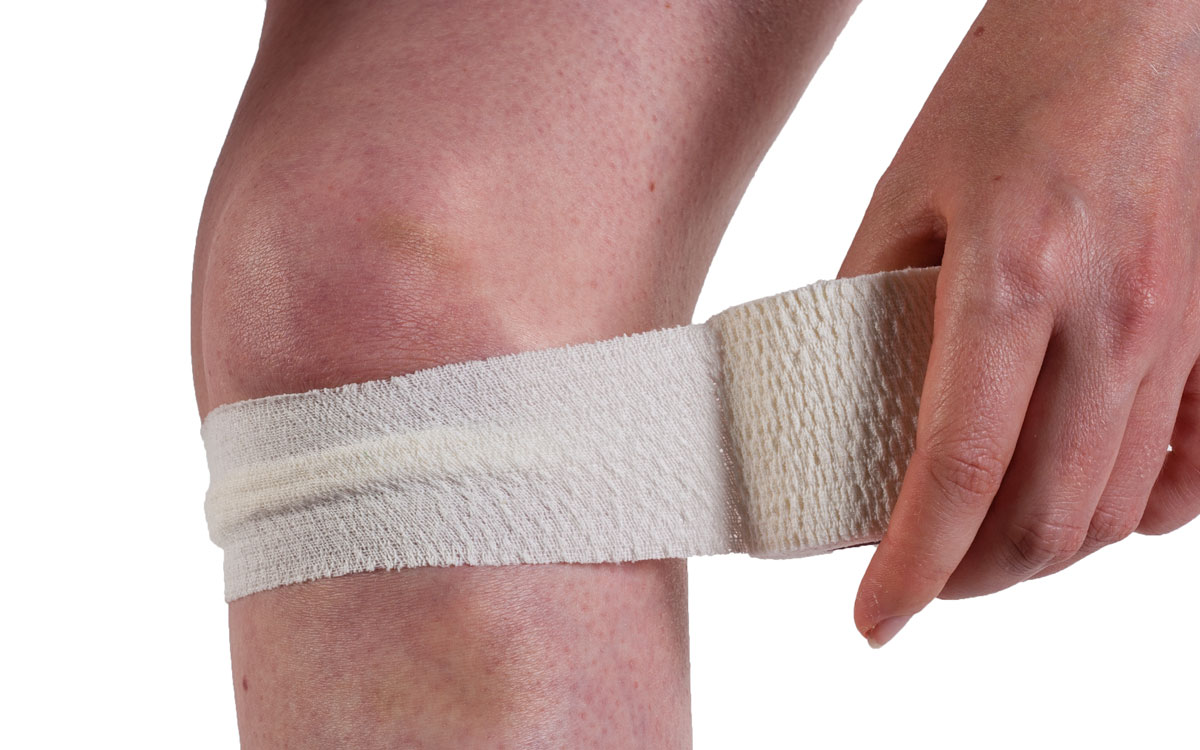
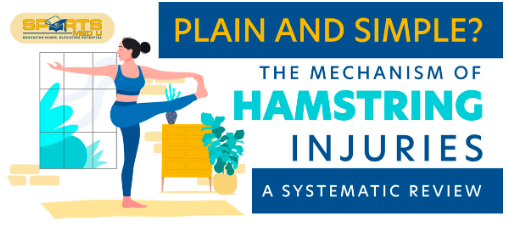
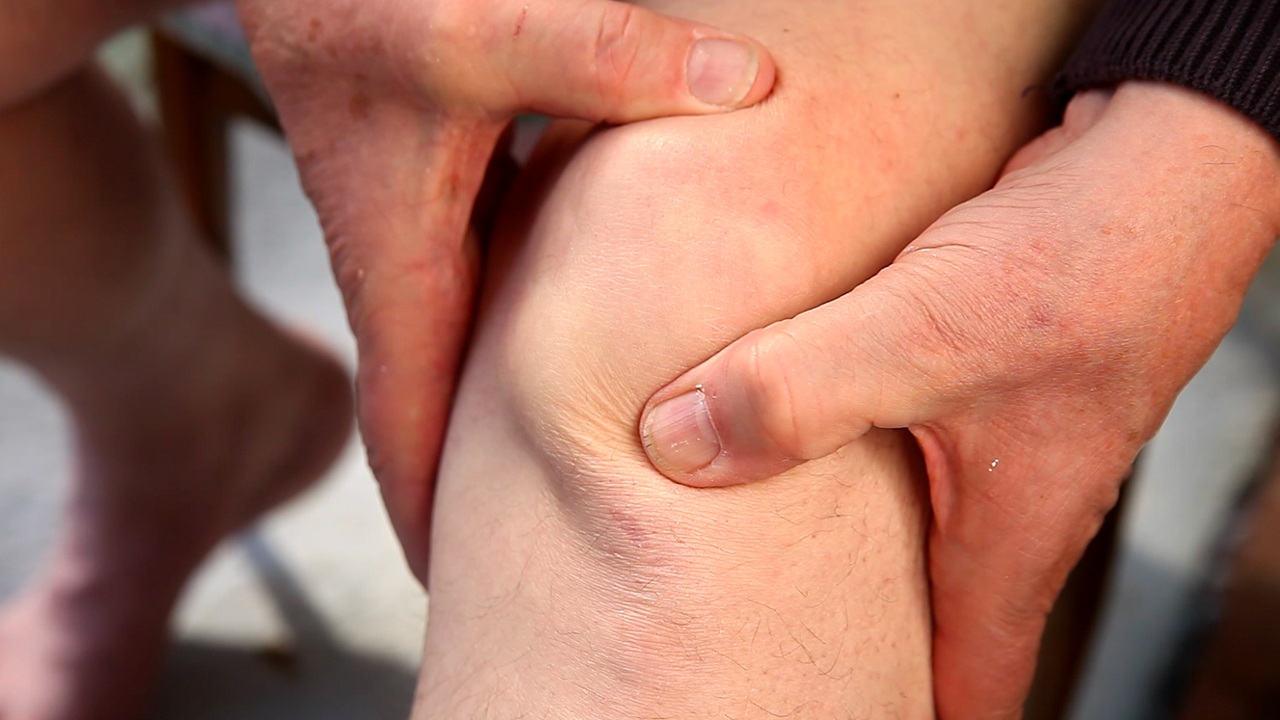
Leave a Reply